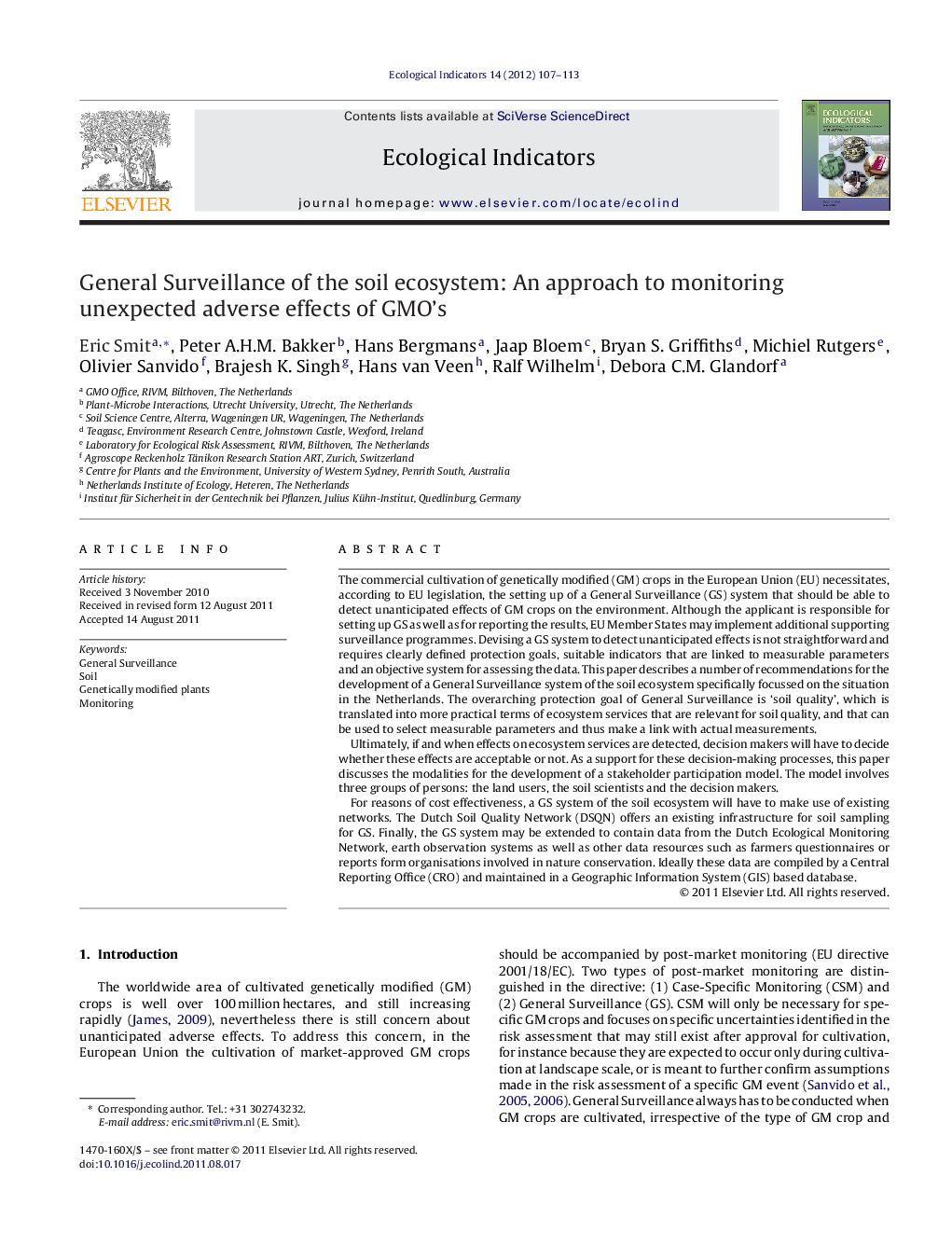| Article ID | Journal | Published Year | Pages | File Type |
|---|---|---|---|---|
| 4373889 | Ecological Indicators | 2012 | 7 Pages |
The commercial cultivation of genetically modified (GM) crops in the European Union (EU) necessitates, according to EU legislation, the setting up of a General Surveillance (GS) system that should be able to detect unanticipated effects of GM crops on the environment. Although the applicant is responsible for setting up GS as well as for reporting the results, EU Member States may implement additional supporting surveillance programmes. Devising a GS system to detect unanticipated effects is not straightforward and requires clearly defined protection goals, suitable indicators that are linked to measurable parameters and an objective system for assessing the data. This paper describes a number of recommendations for the development of a General Surveillance system of the soil ecosystem specifically focussed on the situation in the Netherlands. The overarching protection goal of General Surveillance is ‘soil quality’, which is translated into more practical terms of ecosystem services that are relevant for soil quality, and that can be used to select measurable parameters and thus make a link with actual measurements.Ultimately, if and when effects on ecosystem services are detected, decision makers will have to decide whether these effects are acceptable or not. As a support for these decision-making processes, this paper discusses the modalities for the development of a stakeholder participation model. The model involves three groups of persons: the land users, the soil scientists and the decision makers.For reasons of cost effectiveness, a GS system of the soil ecosystem will have to make use of existing networks. The Dutch Soil Quality Network (DSQN) offers an existing infrastructure for soil sampling for GS. Finally, the GS system may be extended to contain data from the Dutch Ecological Monitoring Network, earth observation systems as well as other data resources such as farmers questionnaires or reports form organisations involved in nature conservation. Ideally these data are compiled by a Central Reporting Office (CRO) and maintained in a Geographic Information System (GIS) based database.
